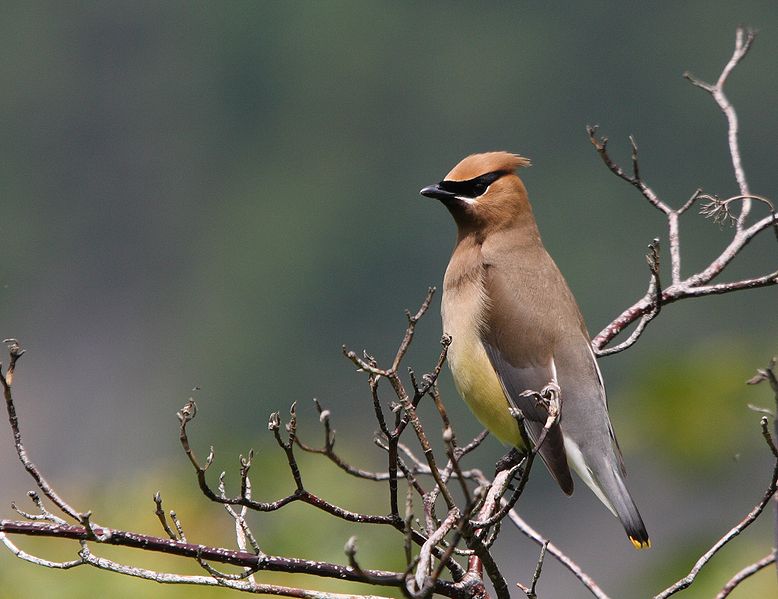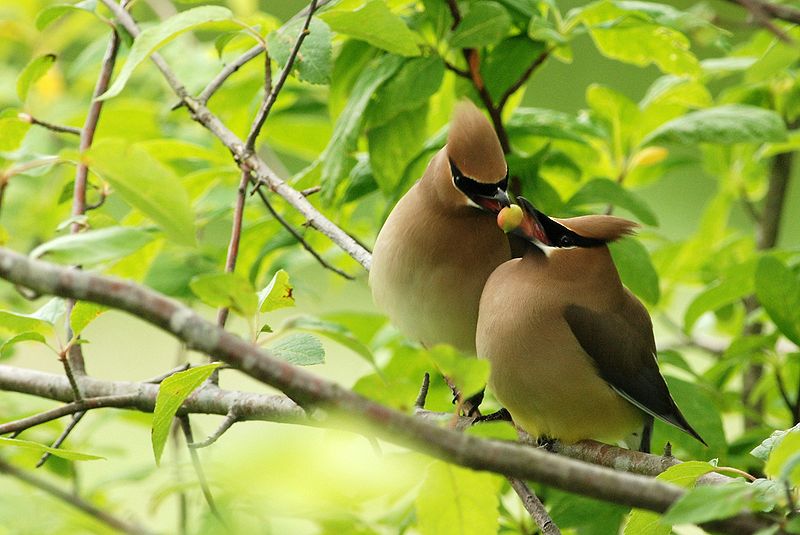back to bird directory
|
|
cedar waxwingBombycilla cedrorum
Identification:
This lovely medium-sized bird is brownish tan on the back, shading to gray towards the tail; its breast is white with a delicate yellow wash. It has a crest on its head and a striking white-rimmed black mask. Its tail feathers are tipped vivid yellow (sometimes orange). Behavior: Cedar waxwings are social; they are almost always with other waxwings. They are gluttonous creatures; they’ll strip a bush clean of berries in short order. They eat a wide range of tree and bush fruits, swallowing them whole. Males and females trade gifts of fruits back and forth during mating season. They are very active, constantly fluttering from branch to branch and tree to tree, whistling softly. What brings it to the SBG? Food, cover, nesting sites. Cedar waxwings (even the young) mostly consume berries (a favorite is berries from the cedar tree), but they eat insects in the summertime. They favor old-field and edge habitat and the SBG area has these characteristics. These adaptable birds have helped to spread native plant seed, but they also eat fruits from invasive species like the Bradford pears in the SBG habitat. Ironically, their numbers may be increasing because humans are planting more ornamental backyard species. They nest in trees, using many species and sometimes building quite high off the ground. When can I see it? Year-round. Cedar waxwing travel patterns are poorly understood, but they can be seen year round in central Pennsylvania. |


